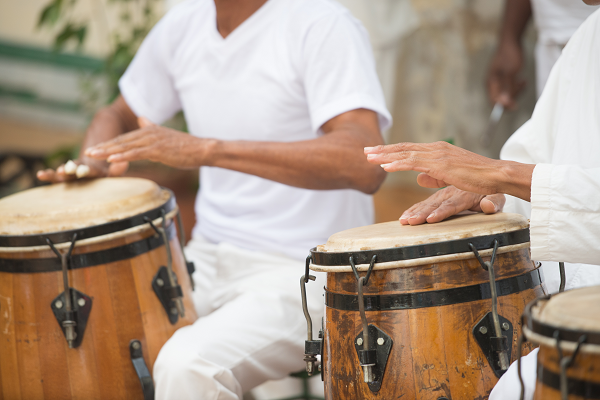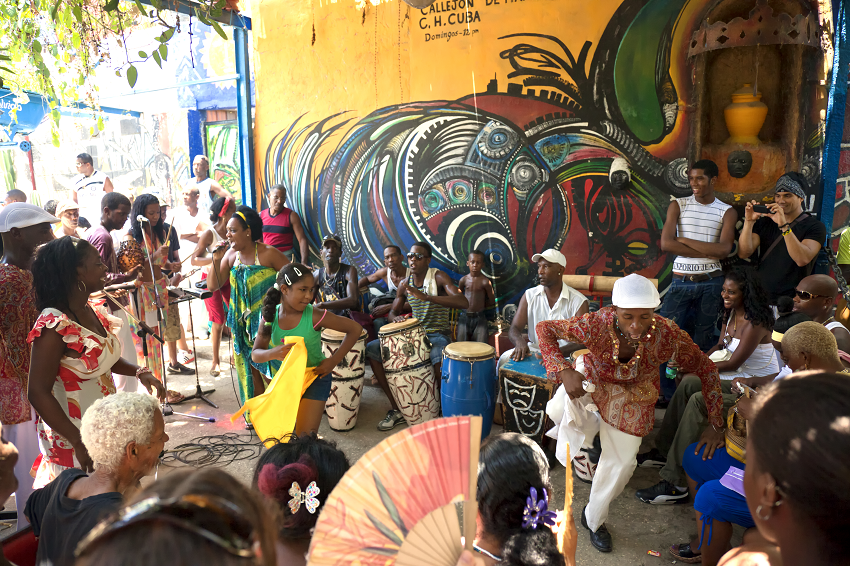- Posted by Kim Gordon
- Category:
- 0 Comments
RUMBA DANCE AND DRUMMING
Take in a live performance of Cuban Rumba before joining in to learn a few moves.

The energetic, rhythmic style of Rumba is everywhere in Cuba. And with roots in Afro-Cuban heritage, the music and dance is a form of national pride. Walking down the streets on Sunday, it’s not uncommon to see friends dancing as someone taps the drums – or anything that can sustain a beat.
We’ll meet some of the dancers and drummers who lead these community rumbas and watch a live performance before joining in on the fun.
Style of Rumba
Rumba is an energetic, rhythmic dance of Spanish and African origins. Conga drums, dried gourds, and claves set the speed and style as seen in backyards and theaters across the country. But in a nation often defined by scarcity, the sound of Cuban rumba changes with the availability of instruments. As such, wooden boxes, bottles, and simple shakers have long been part of the music.
Like danzón and salsa, rumba is an intimate, largely improvised dance based on a few basic steps. The term itself is derived from “rumbear,” a verb meaning “to go party.” And like a party, loose moves and high spirits are key.
History of Rumba
Rumba was born from the bloody crucible of slavery in colonized Cuba. Over the centuries, African slaves combined their drumming with the Spanish melodies — a rare form of self-expression for those denied their freedom. By the late 1800s, rumba took shape with the abolishment of slavery, and was adopted by poor Cubans — many of them former slaves — in the streets and backyards of Havana.
After the revolution, rumba became part of Cuba’s growing government-led culture system. Now, its many derivative forms are deeply embedded in the day-to-day of Cuba’s people. In understanding the role of rumba, you’ll gain a greater appreciation of the island’s pace, rhythm, and community.
This activity is available on our Classic Cuba tour or can be integrated into a custom-made itinerary.














